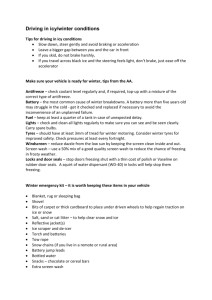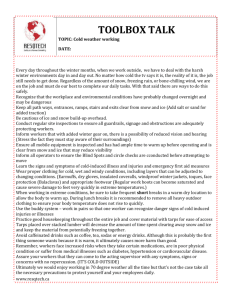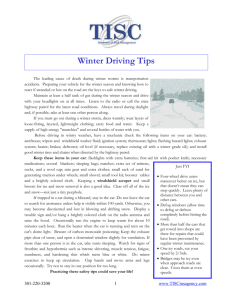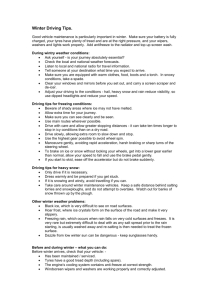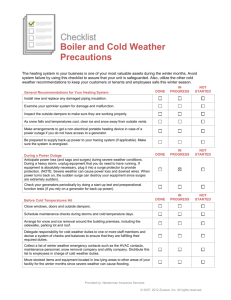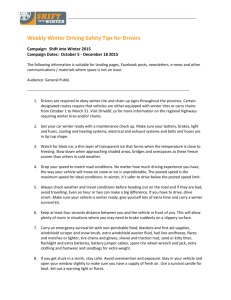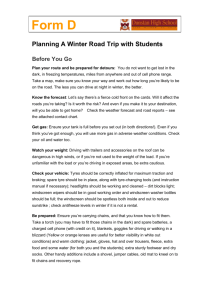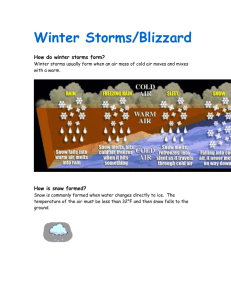Driving in Bad Weather
advertisement
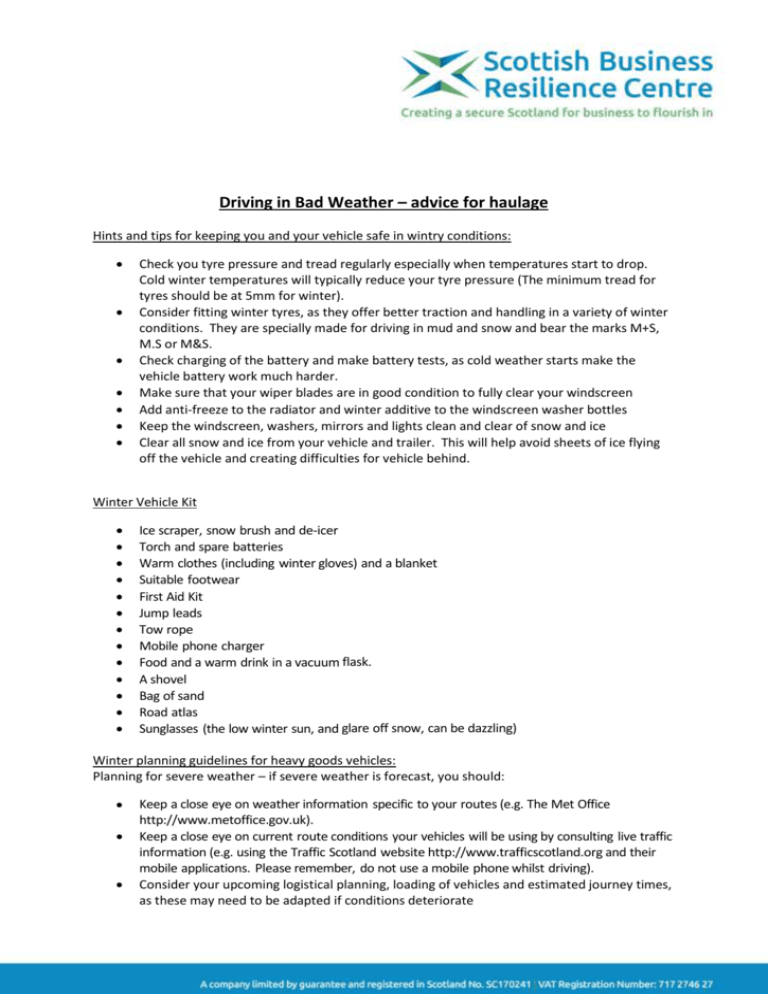
Driving in Bad Weather – advice for haulage Hints and tips for keeping you and your vehicle safe in wintry conditions: Check you tyre pressure and tread regularly especially when temperatures start to drop. Cold winter temperatures will typically reduce your tyre pressure (The minimum tread for tyres should be at 5mm for winter). Consider fitting winter tyres, as they offer better traction and handling in a variety of winter conditions. They are specially made for driving in mud and snow and bear the marks M+S, M.S or M&S. Check charging of the battery and make battery tests, as cold weather starts make the vehicle battery work much harder. Make sure that your wiper blades are in good condition to fully clear your windscreen Add anti-freeze to the radiator and winter additive to the windscreen washer bottles Keep the windscreen, washers, mirrors and lights clean and clear of snow and ice Clear all snow and ice from your vehicle and trailer. This will help avoid sheets of ice flying off the vehicle and creating difficulties for vehicle behind. Winter Vehicle Kit Ice scraper, snow brush and de-icer Torch and spare batteries Warm clothes (including winter gloves) and a blanket Suitable footwear First Aid Kit Jump leads Tow rope Mobile phone charger Food and a warm drink in a vacuum flask. A shovel Bag of sand Road atlas Sunglasses (the low winter sun, and glare off snow, can be dazzling) Winter planning guidelines for heavy goods vehicles: Planning for severe weather – if severe weather is forecast, you should: Keep a close eye on weather information specific to your routes (e.g. The Met Office http://www.metoffice.gov.uk). Keep a close eye on current route conditions your vehicles will be using by consulting live traffic information (e.g. using the Traffic Scotland website http://www.trafficscotland.org and their mobile applications. Please remember, do not use a mobile phone whilst driving). Consider your upcoming logistical planning, loading of vehicles and estimated journey times, as these may need to be adapted if conditions deteriorate Ensure all drivers and vehicles are suitably prepared, including having a fully charged mobile phone. During severe weather – if routes are being affected, you should: Continue to monitor weather information, route conditions and closures. If a trunk road is closed avoid the location by: choosing an alternative route; postponing your journey; or if on route, safely parking up. If your vehicles are experiencing significant traction problems or are stuck on the trunk road network, report this immediately by calling the Free Traffic Scotland Freight Hotline* on 0800 328 5690. Please remember, do not use a mobile phone whilst driving. Seek and share feedback from drivers on road conditions and impact on journey times, adapt and plan. Incident Management – in exceptional circumstances, if a blockage on the trunk road network occurs you can expect the following: The Police may request that you park your HGV. This is important as it will allow access for recovery vehicles, ploughs and gritters. If a driver has a serious welfare issue they should dial 999. For drivers, the Police will manage the incident on the ground providing regular updates, e.g. anticipated length of the closure. For operators, regular updates will be available via Traffic Scotland (http://www. trafficscotland.org). Heaviest loaded HGVs may be requested to leave first to help break up snow and ice. This will be coordinated by the Police. Unit 10, Alpha Centre, Stirling University Innovation Park, Stirling, FK9 4NF Tel: 01786 447 441 Fax: 01786 447 775 enquiry@sbrcentre.co.uk www.sbrcentre.co.uk 2
